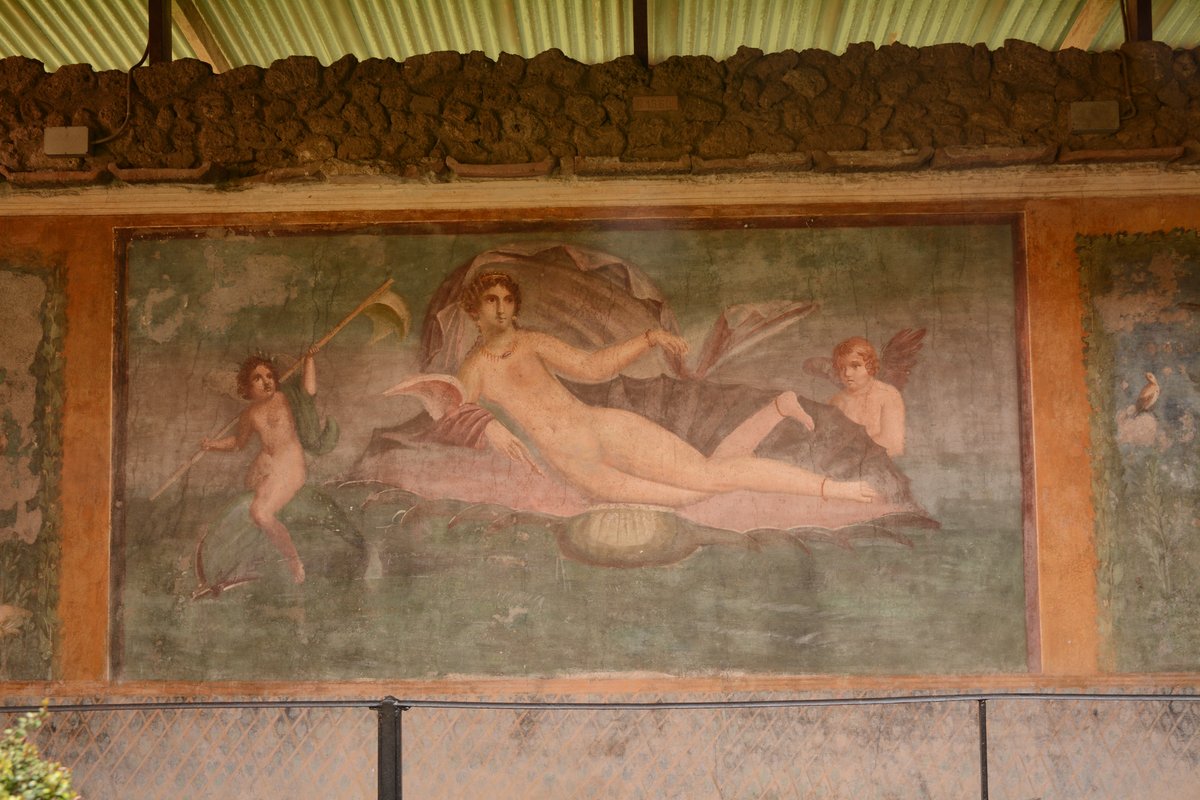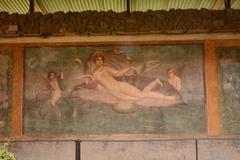
Visiting Scavi Archeologici di Pompei: Hours, Tickets, and Tips
Date: 19/07/2024
Introduction
The Scavi Archeologici di Pompei in Angri, Italy, represents one of the most captivating archaeological sites in the world, offering a unique and unparalleled glimpse into ancient Roman life. Buried under volcanic ash from the catastrophic eruption of Mount Vesuvius in 79 CE, Pompeii has been remarkably preserved, providing an extraordinary time capsule of Roman civilization. Rediscovered in the late 16th century and systematically excavated from 1748 onward, Pompeii has captured the imagination of historians, archaeologists, and tourists alike. Originally founded by the Oscans and later influenced by Greek, Etruscan, and Roman cultures, the city was a bustling hub of commerce and social activity until its sudden destruction. Today, Pompeii stands as a testament to Roman engineering, culture, and daily life, with its well-preserved buildings, frescoes, and artifacts offering invaluable insights (Pompeii Archaeological Park). This comprehensive guide aims to provide essential visitor information, historical insights, and practical tips to help you make the most of your visit to the Scavi Archeologici di Pompei.
Table of Contents
- [Introduction](#introductionintroduction)
- [History of Pompeii](#history-of-pompeiihistory-of-pompeii)
- [Ancient Origins and Early Settlement](#ancient-origins-and-early-settlementancient-origins-and-early-settlement)
- [Roman Conquest and Urban Development](#roman-conquest-and-urban-developmentroman-conquest-and-urban-development)
- [The Catastrophic Eruption of Mount Vesuvius](#the-catastrophic-eruption-of-mount-vesuviusthe-catastrophic-eruption-of-mount-vesuvius)
- [Rediscovery and Excavation](#rediscovery-and-excavationrediscovery-and-excavation)
- [Preservation and Modern Archaeology](#preservation-and-modern-archaeologypreservation-and-modern-archaeology)
- [Cultural and Historical Significance](#cultural-and-historical-significancecultural-and-historical-significance)
- [Key Discoveries and Artifacts](#key-discoveries-and-artifactskey-discoveries-and-artifacts)
- [Visiting Pompeii Today](#visiting-pompeii-todayvisiting-pompeii-today)
- [Ticket Prices](#ticket-pricesticket-prices)
- [Opening Hours](#opening-hoursopening-hours)
- [Guided Tours](#guided-toursguided-tours)
- [Travel Tips](#travel-tipstravel-tips)
- [Best Times to Visit](#best-times-to-visitbest-times-to-visit)
- [Nearby Attractions](#nearby-attractionsnearby-attractions)
- [Accessibility](#accessibilityaccessibility)
- [Photography](#photographyphotography)
- [Why It Is a Must-Visit Site](#why-it-is-a-must-visit-sitewhy-it-is-a-must-visit-site)
- [Educational Value](#educational-valueeducational-value)
- [Preservation and Conservation](#preservation-and-conservationpreservation-and-conservation)
- [Unique Experience](#unique-experienceunique-experience)
- [Special Events and Exhibitions](#special-events-and-exhibitionsspecial-events-and-exhibitions)
- [Conclusion](#conclusionconclusion)
- [References](#referencesreferences)
History of Pompeii
Ancient Origins and Early Settlement
The archaeological site of Pompeii, located near the modern town of Angri in Italy, dates back to the 7th century BCE. Initially settled by the Oscans, an Italic tribe, Pompeii was later influenced by the Greeks and Etruscans, which is evident in the architectural and cultural remnants found at the site. The strategic location of Pompeii, near the Sarno River and the Bay of Naples, made it a significant hub for trade and commerce in ancient times.
Roman Conquest and Urban Development
Pompeii came under Roman control in 80 BCE after the Social War, a conflict between Rome and its Italian allies. The city was transformed into a Roman colony, known as Colonia Cornelia Veneria Pompeianorum. This period marked significant urban development, including the construction of public buildings, temples, and an amphitheater. The city’s infrastructure, such as roads, aqueducts, and sewage systems, was also enhanced, reflecting the advanced engineering skills of the Romans.
The Catastrophic Eruption of Mount Vesuvius
The most defining moment in Pompeii’s history occurred on August 24, 79 CE, when Mount Vesuvius erupted catastrophically. The eruption buried Pompeii under approximately 4 to 6 meters (13 to 20 feet) of volcanic ash and pumice, preserving the city in a time capsule. The suddenness of the disaster meant that many residents were caught unawares, and their final moments were immortalized in the ash. The eruption also affected nearby towns such as Herculaneum, Stabiae, and Oplontis.
Rediscovery and Excavation
Pompeii remained buried and forgotten until its rediscovery in 1599 by the architect Domenico Fontana. However, systematic excavations did not begin until 1748 under the direction of the Spanish military engineer Rocque Joaquin de Alcubierre. Early excavations were often haphazard and focused on retrieving valuable artifacts rather than preserving the site. It wasn’t until the 19th century that more scientific and methodical approaches to archaeology were adopted, led by figures such as Giuseppe Fiorelli. Fiorelli introduced techniques like plaster casting to capture the voids left by decomposed bodies, providing a poignant glimpse into the lives of Pompeii’s inhabitants.
Preservation and Modern Archaeology
In the 20th and 21st centuries, efforts to preserve and study Pompeii have intensified. Modern archaeological techniques, including digital mapping and non-invasive surveys, have provided new insights into the city’s layout and daily life. The site has also faced challenges, such as exposure to the elements and the impact of tourism. Conservation projects, often supported by international collaborations, aim to protect Pompeii’s invaluable heritage for future generations.
Cultural and Historical Significance
Pompeii offers an unparalleled window into the past, providing detailed insights into Roman urban life, architecture, and society. The city’s well-preserved buildings, frescoes, and artifacts reveal much about the daily lives, social structures, and cultural practices of its inhabitants. Sites such as the Forum, the House of the Faun, and the Villa of the Mysteries are particularly notable for their historical and artistic value.
Key Discoveries and Artifacts
Several key discoveries have been made at Pompeii, each contributing to our understanding of the ancient world. The House of the Vettii, for example, is renowned for its elaborate frescoes depicting mythological scenes. The Villa of the Mysteries contains well-preserved murals that provide insights into the religious practices of the time. Additionally, the discovery of the amphitheater, one of the oldest surviving Roman amphitheaters, highlights the importance of public entertainment in Roman culture.
Visiting Pompeii Today
Ticket Prices
Tickets to Pompeii can be purchased online or at the entrance. Prices vary based on the type of ticket (standard, reduced, or free) and any additional tours or experiences you may choose to add. For the latest ticket prices and booking, visit the official Pompeii Archaeological Park website.
Opening Hours
Pompeii is open daily, with varying hours depending on the season. Typically, the site opens at 9:00 AM and closes between 5:00 PM to 7:30 PM. It’s best to check the official Pompeii Archaeological Park website for the most up-to-date information on visiting hours.
Guided Tours
Guided tours are available and highly recommended for a deeper understanding of the site’s history and significance. These tours are led by knowledgeable guides who can provide context and detail that you might miss on a self-guided visit.
Travel Tips
Best Times to Visit
Spring (April to June) and fall (September to October) offer the best weather and fewer crowds. Early morning and late afternoon visits can also help you avoid peak tourist times.
Nearby Attractions
Consider visiting nearby sites such as Herculaneum, Stabiae, and Oplontis for a more comprehensive understanding of the region’s history. Mount Vesuvius, the volcano that caused Pompeii’s destruction, is also a popular attraction where you can hike to the crater.
Accessibility
Pompeii is working to improve accessibility, but uneven terrain and ancient structures can pose challenges. Check the official accessibility page for details on accessible routes and facilities.
Photography
Pompeii offers numerous photographic spots. Remember to be respectful of the site and other visitors when taking photos. The use of tripods, selfie sticks, and professional equipment requires special permission, and drones are strictly prohibited.
Why It Is a Must-Visit Site
Educational Value
Visiting Pompeii is an educational experience like no other. The site offers a tangible connection to the past, allowing visitors to walk the streets and enter the buildings of an ancient Roman city. This immersive experience provides a deeper understanding of Roman history, culture, and daily life than any textbook could offer. Educational tours and detailed informational plaques throughout the site enhance the learning experience (UNESCO).
Preservation and Conservation
The ongoing efforts to preserve and conserve Pompeii make it a must-visit site. Modern technology and conservation techniques are employed to protect the site from environmental and human damage. These efforts ensure that future generations will also have the opportunity to explore and learn from this remarkable archaeological treasure (Pompeii Sites).
Unique Experience
Pompeii offers a unique and unforgettable experience for visitors. The sheer scale of the site, combined with the level of preservation, makes it unlike any other archaeological site in the world. Walking through the streets of Pompeii, visitors can almost feel the presence of the ancient Romans who once lived there. The site also offers stunning views of Mount Vesuvius, providing a dramatic backdrop to the ruins (Lonely Planet).
Special Events and Exhibitions
Pompeii frequently hosts special events and exhibitions that provide additional insights into the site’s history and significance. These events often feature expert talks, guided tours, and interactive displays, making them a great way to enhance your visit. Check the official Pompeii Sites Events page for information on upcoming events and exhibitions.
Conclusion
In summary, the Scavi Archeologici di Pompei in Angri, Italy, is a site of immense historical and cultural significance. Its well-preserved ruins offer a unique window into the past, making it a must-visit destination for anyone interested in history, archaeology, or Roman culture. Whether you’re exploring the architectural marvels, admiring the frescoes, or learning about the social and economic life of ancient Pompeii, this archaeological site provides an unparalleled experience. Make sure to plan your visit with the latest information on visiting hours and tickets, and take advantage of the special events and exhibitions to make the most of your trip. Follow us on social media for more updates and travel tips.
